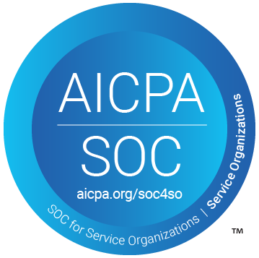No matter which phase of email maturity your creation program is in, you probably already put a fair amount of emphasis on email quality assurance, commonly known as “QA.” However, we often see that teams in earlier phases of email creation maturity are so pressed for time that most of their time is dedicated to crafting the email, leaving a very limited amount of time for strategy and execution, including QA measures.
But what does QA look like in practice, exactly, and why is it so important to prioritize? Read on to find out.
The benefits of QA
Your brand’s reputation is reflected in the quality of the content you put out, including your emails. It is a pretty bad look to be known for sloppy or broken emails, and is a mistake your organization just can’t afford to make. Not only do your users or customers notice these things, but so does your senior leadership! Technology makes it easier than ever to streamline historically tedious tasks; If you’re not thinking about how to progress from manual, slow, ‘humans need to QA every last thing’ processes, your competitors almost certainly are. Your ROI will also suffer without QA: Just one broken lead generation link can cost your organization huge amounts of money.
Let’s take a look at how to implement exceptional QA and ensure this doesn’t happen.
Understand the different flavors of “QA”
Rightly so, “QA” means different things to different people. In order to avoid getting lost in translation, make sure QA priorities are clear across the entire organization. A designer might only be QAing for brand guidelines (colors, fonts, spacing, overall look and feel) while someone in deployment or campaign operations is focused on deliverability and personalization tags. You might hear terms like “technical QA,” “brand QA,” and “design QA,” all of which are valid differing forms of QA. It makes sense that different team members will QA based on their roles and responsibilities, and it’s not a bad idea to break up the process like this. Just make sure each team member knows exactly which QA aspects they’re responsible for and has an idea of how their QA is part of the overall protocol. It’s not uncommon for some items to fall through the cracks if you have different people checking for different things.
Adhere to a checklist
One of the first steps you should take in establishing good QA is building a checklist. Depending on the stakeholders involved, you may have a couple checklists. In general, the more things that you can use technology to automatically check for rather than requiring a human to do each time, the better. People want to send perfect emails, but we know all too well that folks are often rushed and occasionally a mistake happens. The items on your lists can very slightly based on your email needs, but should include things like:
- Test your links: Make sure that none of your links are broken or accidentally lead to the wrong web page. Not only is this an awkward blunder, but it means recipients won’t be able to access the destinations you’re trying to point them to in the first place.
- Preview desktop and mobile versions of your email: Since approximately 62% of all emails are opened on a mobile device (and this number is rising), ensure that your email looks good in a mobile layout. If your file size for images is too large, your email’s load time will be increased, and buttons or links should be easy to press with a finger (a string of tiny social icons are usually a common culprit in this area). If you use a professional email creation platform with the proper guardrails implemented, you probably don’t need to render test your email on every possible version of every device, every single time you create a campaign, as often generic desktop and mobile will suffice.
- Check your link tracking parameters: If you’re tracking your links (which you should be!), make sure that your parameters are all correct, including the exact string you need to use, the letter case, and the ‘?’ and ‘&’ symbols.
Ensure brand governance and ADA compliance
Every email must adhere to both brand governance and ADA compliance rules. ADA compliance is a legal matter, and failing to adhere will also cost you dearly. The best way to ensure that ADA regulations are all accounted for and every design element lines up with brand guidelines is to work with an email creation platform like Stensul that automatically enforces brand guidelines and ADA regulations, so that designers and developers aren’t tasked with an extra layer of time-consuming work with every deployment.
This is where technology comes in. Your creation software should include helpful QA capabilities, like automatically setting up your text in the correct fonts and offering templates that are pre-designed with your brand’s colors and logo, to help alleviate the manual QA work required of your team members.
Utilizing a third-party platform like stensul takes the headache out of QA by automatically employing QA measures like ADA regulations, brand governance, and optimizing emails for both desktop and mobile. To learn more about exactly how Stensul will help your team whip through your QA checklist in record time, schedule a demo with one of our platform experts.



